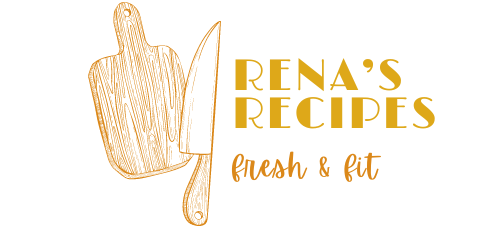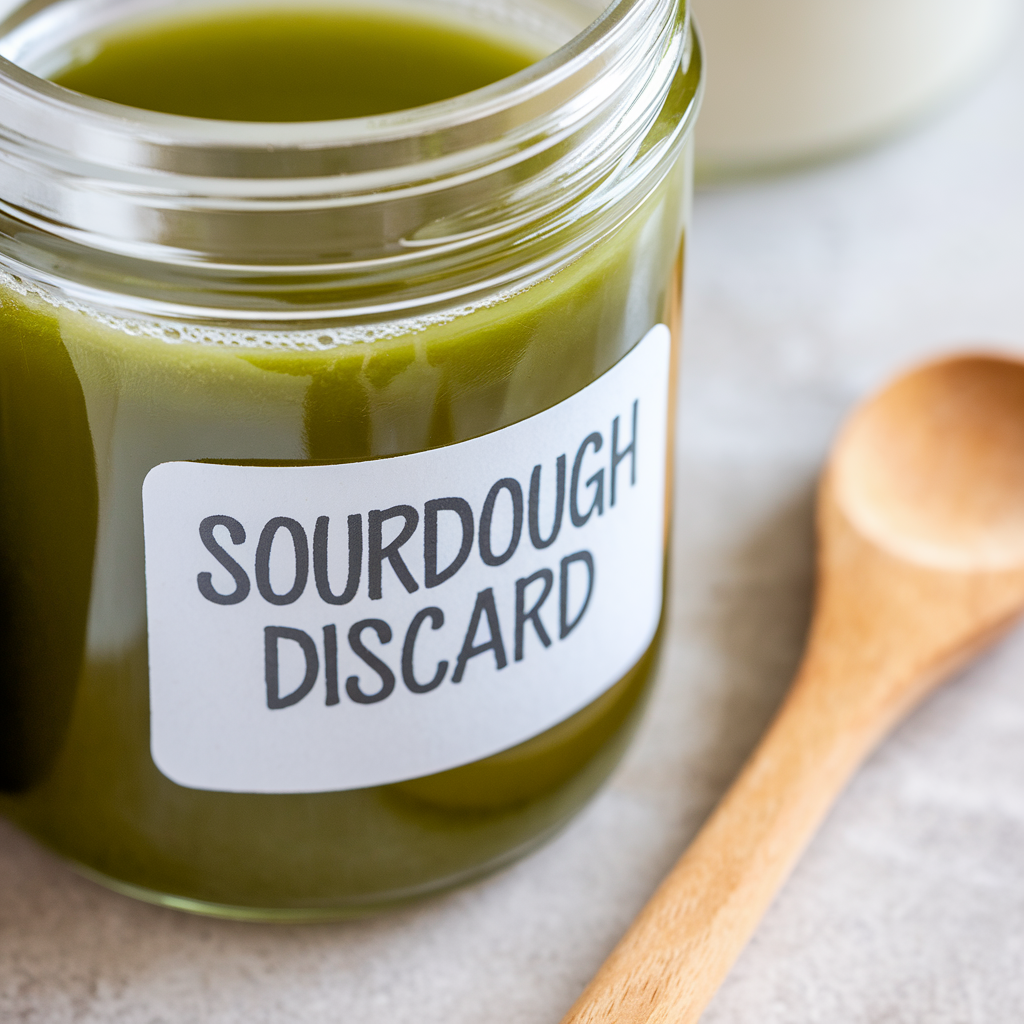
Is Sourdough Discard Healthy?
Sourdough discard is the portion of the sourdough starter that’s removed before feeding the starter with fresh flour and water. The fermentation process in sourdough helps develop beneficial bacteria and yeast. However, if the starter isn’t regularly fed and excess discard isn’t removed, the mixture can become too acidic, weakening the yeast and affecting its rising power. Sourdough discard is no longer actively fermenting, but it still contains beneficial nutrients and can be incorporated into various recipes, even if it no longer helps bread rise.
In this guide, we’ll explore whether sourdough discard is healthy, look at its nutritional benefits, and share creative ways to use it. For more information on why discarding sourdough starter is necessary, visit this helpful guide by The Pantry Mama. If you want to know more about how to store sourdough discard.
What Is Sourdough Discard?
Sourdough discard is the portion of the sourdough starter that’s removed before feeding the starter with fresh flour and water. The fermentation process in sourdough helps develop beneficial bacteria and yeast. However, if the starter isn’t regularly fed and excess discard isn’t removed, the mixture can become too acidic, weakening the yeast and affecting its rising power. Sourdough discard is no longer actively fermenting, but it still contains beneficial nutrients and can be incorporated into various recipes, even if it no longer helps bread rise.
For a detailed look into how to store sourdough discard and why it needs to be removed, check out this useful resource on storing sourdough discard.
Nutritional Benefits of Sourdough Discard
Though sourdough discard may no longer have the same level of yeast activity as an active starter, it retains several important nutritional benefits that can contribute to a healthy diet.
1. Probiotics
Sourdough discard is fermented, meaning it contains beneficial bacteria that can support gut health. These probiotics are developed during the fermentation process and help in balancing the gut microbiome. Including fermented foods like sourdough discard in your diet may improve digestion and support overall gut function.
2. Vitamins and Minerals
Discard retains many vitamins and minerals from the flour used to create the starter. B vitamins such as thiamine, niacin, and riboflavin, which are essential for energy production and metabolism, are present in sourdough discard. Moreover, if whole grain flour is used in the starter, it can offer additional nutrients such as iron and magnesium.
3. Fiber and Omega-3s
If your sourdough starter uses whole grain flour, the discard will contain fiber and healthy fats like omega-3s. These are beneficial for heart health, reducing inflammation, and aiding digestion.
Using Sourdough Discard in Everyday Recipes
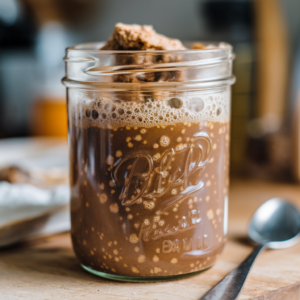
One of the best things about sourdough discard is its versatility. It can be used in a wide variety of recipes, from quick breakfasts to more complex baked goods. Using discard not only helps you reduce food waste but also brings a tangy flavor to your dishes.
Quick Recipes with Sourdough Discard
- Sourdough Pancakes
- Pancakes are one of the easiest and most common ways to use sourdough discard. The discard adds a subtle tang and fluffiness to the pancakes.
- How to make sourdough pancakes:
- Mix 200g sourdough discard, 1 cup flour, 2 eggs, 1 cup milk, and 1 teaspoon baking powder.
- Cook on a hot griddle until bubbles form on the surface, then flip and cook until golden brown.
- Sourdough Waffles
- Waffles made with sourdough discard are crispy on the outside, soft on the inside, and full of flavor. They’re a great way to use discard without any complex preparation.
- How to make sourdough waffles:
- Combine 200g sourdough discard, 1 cup flour, 1 egg, 1 cup milk, and 1 teaspoon baking powder.
- Pour the batter into a preheated waffle iron and cook until golden and crispy.
- Sourdough Crackers
- For a quick yet crunchy snack, sourdough crackers are an excellent option. Not only are they simple to make, but they’re also perfect for pairing with cheese or dips, making them a versatile choice for any occasion.”How to make sourdough crackers:
- First, mix 200g sourdough discard with 1 cup flour, 1/4 cup olive oil, and your choice of seasoning (rosemary, garlic, etc.).
- Then, roll the dough thinly and cut into shapes.
- Finally, bake at 350°F for about 15 minutes until crispy and golden.
- For a quick yet crunchy snack, sourdough crackers are an excellent option. Not only are they simple to make, but they’re also perfect for pairing with cheese or dips, making them a versatile choice for any occasion.”How to make sourdough crackers:
Baked Goods and Comfort Foods with Sourdough Discard
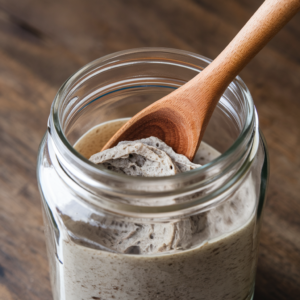
Sourdough discard can also be used in more substantial recipes, like baked goods and comfort foods. The tangy flavor of discard adds complexity to these dishes, and many of them benefit from the long fermentation process.
1. Sourdough Pretzels
Pretzels are a favorite snack, and using sourdough discard in the dough gives them a distinctive tang. The soft, chewy texture paired with the subtle sourness makes them a perfect treat.
- How to make sourdough pretzels:
- Mix 200g discard, 1 cup flour, 1/2 cup water, and 1 teaspoon yeast.
- Shape into pretzels, boil in a solution of water and baking soda, then bake until golden brown.
2. Sourdough Banana Muffins
These sourdough banana muffins are not only a moist and flavorful way to use overripe bananas and sourdough discard, but they also offer a delicious balance of flavors. In particular, the tang of the discard pairs perfectly with the sweetness of the bananas, resulting in a well-rounded and delightful treat.”
How to make sourdough banana muffins:
- First, mix 200g discard with 2 mashed bananas, 1 cup flour, 1 egg, and 1/2 cup sugar.
- Next, pour the batter into muffin cups.
- Finally, bake at 350°F for 20-25 minutes until golden brown.
3. Sourdough Pizza Dough
Sourdough pizza dough provides a chewy and flavorful base for any homemade pizza. The discard adds a subtle tang to the crust, elevating the overall flavor of your pizza.
- How to make sourdough pizza dough:
- Combine 200g discard, 1 cup flour, 1/2 cup water, and 1 teaspoon yeast.
- Let rise for 2 hours, shape into a pizza base, add your toppings, and bake at 450°F for 12-15 minutes.
Creative Uses for Sourdough Discard
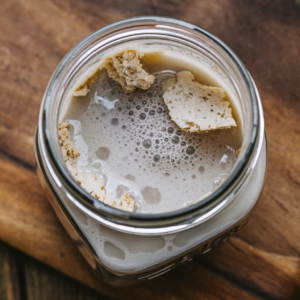
Beyond the more typical baked goods, sourdough discard can also be used in creative and unconventional ways. These recipes may surprise you with their flavor and versatility.
1. Sourdough Meatballs
Instead of using breadcrumbs, you can add sourdough discard to your meatball mix. This adds extra moisture and a slight tang to the meatballs.
- How to make sourdough meatballs:
- Mix 200g discard with ground meat, spices, and herbs. Form into meatballs and cook them in a skillet or bake in the oven until golden brown.
2. Sourdough Granola
If you love a crunchy snack or topping for your yogurt, sourdough granola is a unique way to use discard. The fermentation adds an interesting twist to the usual granola flavors.
- How to make sourdough granola:
- Combine oats, nuts, honey, and 200g discard. Spread on a baking sheet and bake at 350°F until golden and crispy.
3. Sourdough Focaccia Bread
Focaccia is known for its light and airy texture, and using sourdough discard enhances this with a slight tang. The discard pairs beautifully with olive oil, herbs, and sea salt.
- How to make sourdough focaccia:
- Mix 200g discard with 2 cups flour, 1 cup water, and 1 teaspoon yeast. Let the dough rise, spread it onto a baking tray, and bake after drizzling with olive oil and herbs.
Long-Fermented Recipes Using Sourdough Discard
Some recipes benefit from extended fermentation, allowing the discard to further break down the grains and enhance the flavors. These long-fermented recipes not only taste better but also offer more nutritional benefits.
1. Sourdough Cornbread
Sourdough cornbread is a healthier twist on the traditional Southern recipe. The long fermentation helps make the cornmeal easier to digest and adds a new flavor dimension.
- How to make sourdough cornbread:
- Mix 200g discard with 1 cup cornmeal, 1/2 cup flour, 1 cup buttermilk, and 2 eggs. Let it ferment for several hours before baking at 375°F for 25-30 minutes.
2. Sourdough Batter for Frying
Sourdough discard can also be used to create a batter for frying. Whether you’re frying fish, chicken, or vegetables, the sourdough adds a crisp, tangy coating to the fried foods.
- How to make sourdough frying batter:
- Mix 200g discard with 1 cup flour, 1 teaspoon baking soda, and enough water to form a batter. Dip your food into the batter and fry in hot oil until golden and crispy.
Is Sourdough Discard Healthy for You?
The question of whether sourdough discard is healthy often depends on how it’s used. Let’s break down the potential health benefits and considerations when incorporating discard into your diet.
1. Improved Digestion
One of the primary benefits of sourdough discard is that the fermentation process helps break down gluten and other complex proteins, making them easier for the body to digest. This is especially beneficial for those with mild gluten sensitivities.
2. Lower Blood Sugar Impact
Foods made with sourdough discard, especially those that go through long fermentation, often raise blood sugar more slowly. This makes them a better choice for people watching their blood sugar compared to non-fermented foods.
3. Better Nutrient Absorption
The fermentation process in sourdough helps lower phytic acid, which can stop the body from absorbing key minerals like iron and magnesium. It also boosts the nutrition of the grains. So, by adding sourdough discard to your meals, you help your body get more nutrients from the grains, which supports better digestion and overall health.
4. Sodium and Calories
While sourdough discard has health perks, it’s important to pay attention to the recipes you use it in. Some, like pretzels or crackers, can need a lot of salt. Also, baked goods made with discard can have more calories depending on the ingredients you add. So, remember to enjoy these treats in moderation.
FAQs About Sourdough Discard
- How long can you keep sourdough discard?
You can keep sourdough discard in a sealed container in the fridge for up to two weeks, or you can freeze it for up to three months. - Can I use sourdough discard right after removing it from the starter?
Yes, you can use sourdough discard right away, especially in quick recipes like pancakes or muffins. - Does sourdough discard have gluten?
Yes, unless you’re using a gluten-free starter, sourdough discard will have gluten. - What are the healthiest ways to use sourdough discard?
Recipes that ferment longer, like bread or cornbread, give the most health benefits because they help with digestion and let your body absorb more nutrients.
Conclusion
Sourdough discard is not just a useful ingredient but also a healthy one when used the right way. It can help with digestion and adds flavor to both sweet and savory foods. Whether you’re making pancakes, crackers, or long-fermented bread, there are plenty of ways to use this often-overlooked ingredient. So next time you feed your sourdough starter, don’t toss the discard—it might be the secret to your next delicious meal!
